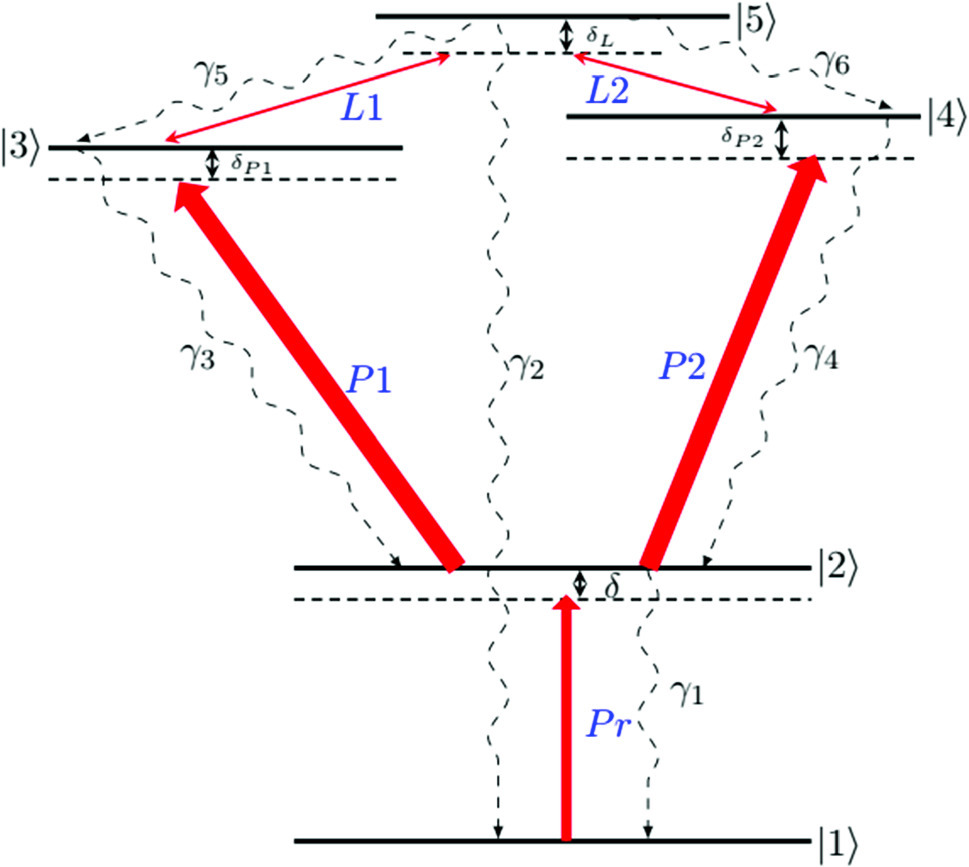https://doi.org/10.1140/epjd/s10053-023-00724-3
Regular Article – Optical Phenomena and Photonics
Microwave-controlled coherence effects and the generation of four-wave mixing signal in a five-level atomic system involving Rydberg states
1
Department of Physics, Aliah University, IIA/27, New Town, 700 160, Kolkata, India
2
Department of Physics, Surendranath College, 24/2, Mahatma Gandhi Rd, 700 009, Kolkata, India
Received:
10
February
2023
Accepted:
1
July
2023
Published online:
26
July
2023
We have investigated the optical responses of a microwave-mediated pump–probe laser-driven five-level Kobrak–Rice (KR5)-like closed-loop atomic system involving three Rydberg states. The atomic transitions between the Rydberg states are driven by electric field components of two microwave fields. It is observed that multiple electromagnetically induced transparency (EIT) windows appear in the probe absorption profile for the Doppler-free medium. The position of the EIT windows is controllable by altering the ratio of the two microwave field strengths and the relative phase between them when the pump and probe strengths are fixed. For Doppler-broadened EIT-induced medium, atoms with different groups of velocities further affect the atomic coherence substantially. Corresponding dispersion profiles owing variation in the group refractive index of the medium show possible switching between superluminal and subluminal probe light propagation. Finally, we have demonstrated the generation of four-wave mixing (FWM) signal in the said five-level system. The amplitude of the generated FWM signal is found to be influenced by the strength ratios of the two microwave fields and their relative phase.
Copyright comment Springer Nature or its licensor (e.g. a society or other partner) holds exclusive rights to this article under a publishing agreement with the author(s) or other rightsholder(s); author self-archiving of the accepted manuscript version of this article is solely governed by the terms of such publishing agreement and applicable law.
© The Author(s), under exclusive licence to EDP Sciences, SIF and Springer-Verlag GmbH Germany, part of Springer Nature 2023. Springer Nature or its licensor (e.g. a society or other partner) holds exclusive rights to this article under a publishing agreement with the author(s) or other rightsholder(s); author self-archiving of the accepted manuscript version of this article is solely governed by the terms of such publishing agreement and applicable law.





